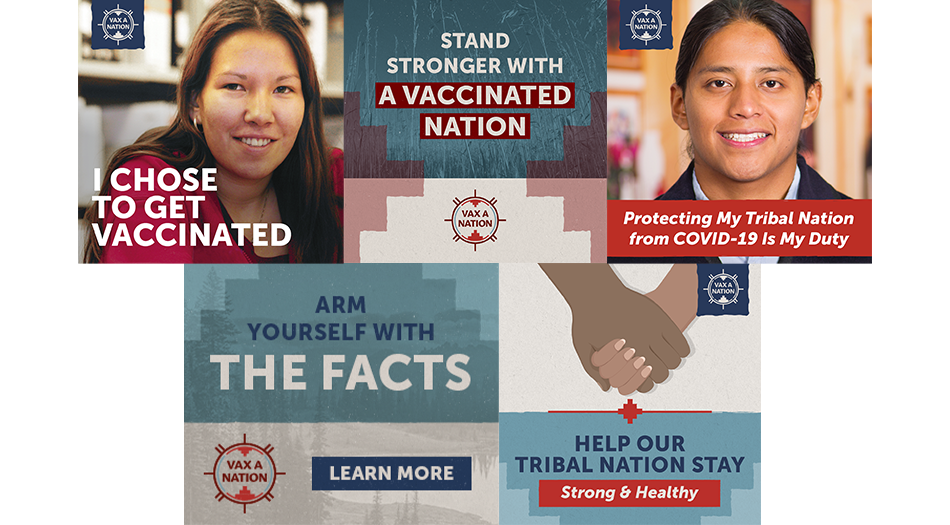Case study: Using social marketing to improve public health

Gabrielle Seneres
Master’s student, Population and Health Sciences; Research Project Manager, Rescue Agency
Gabrielle Seneres is a master’s student in the online MPH program at the University of Michigan School of Public Health. Seneres uses her experience as a behavior change researcher at Rescue Agency, a health communications company, to outline five practical steps that can help anyone create effective communications for behavior change and improving public health.
Today, there are endless opportunities for engagement online through social media and other content-sharing websites. The internet is an integral part of our everyday life experience and offers an ideal delivery system for information and news. In fact, 8 out of 10 people report receiving the majority of news via their digital devices, such as through social media apps or online news outlets1. It’s a perfect platform for health professionals and public health practitioners to leverage health promotion strategies, such as social marketing.
What is Social Marketing?
Social marketing “applies marketing principles to create, communicate and deliver value in order to influence target audience behaviors that benefit society (public health, safety, the environment, and communities) as well as the target audience.”2 One major aspect of social marketing is using audience insights to understand the key drivers that will lead to changing a certain behavior.
Real Life Application: Vax-A-Nation
Research is an important step in developing any health messaging intervention, such that it is backed by scientific evidence and is informed by the voices of the community in which it is implemented.
Our health communications agency, Rescue Agency, conducted research in partnership with Tribal communities in order to develop a social marketing campaign aimed at increasing COVID-19 vaccination rates among American Indian and Alaska Natives in the Southeastern United States. This case study shows a five-step process for researching and developing an effective campaign strategy based on our recent work with the United South & Eastern Tribes, Inc. (USET) Vax-A-Nation campaign:
1. Identify the problem and the goal for behavior change
In early 2019, the COVID-19 pandemic hit the US and disproportionately impacted marginalized populations, such as American Indian and Alaska Natives (AI/AN)3. However, despite subsequent efforts to distribute the vaccine when it became available, Tribal nations in the South and Eastern regions of the US struggled to meet the recommended target of 75-80% community vaccination uptake.
Throughout the pandemic, some AI/AN populations were hesitant to adopt these public health efforts. According to a report from the Urban Indian Health Institute, COVID-19 vaccine hesitancy among Native populations may be due to a historic distrust of governmental agencies which is rooted in years of colonization, genocide and medical experimentation4.
The presented challenge was determining how to increase vaccine uptake in a community that historically faced challenges in the US healthcare system and continues to face a polarized landscape of information pertaining to COVID-19. The overall goal was to identify key insights about the audience to be used in a media campaign for COVID-19 vaccines.
2. Identify the target audience
Using a screening questionnaire, we identified three segments of individuals who identified as being hesitant to receive the COVID-19 vaccine: the Wait-and-Seers, Maybe Nevers and the Nevers. According to existing research, it was hypothesized that the Wait-and-Seers were more receptive to communication efforts and thus became the primary target audience for this campaign5. However, research was also conducted with Maybe Nevers and Nevers in order to better understand general perceptions of vaccinations and opportunities for further education among these audiences.
3. Understand the audience’s perceptions and values
Using a mixed methods research approach, we conducted in-depth interviews, focus groups, and a cross-sectional survey to assess COVID-19 vaccine knowledge, attitudes, and values among a sample of Tribal citizens who reported vaccine hesitancy across the three audience segments.
We found that lack of research on or “proof” of the safety and efficacy of the vaccine was the top reason participants reported being hesitant to get vaccinated. There were also vaccine concerns associated with personal values such as having the right to choose and maintaining autonomy. We also learned of several perceived benefits to receiving the vaccine among this population, such as having the ability to protect family members or elders from unwanted illness. Some of the barriers and motivators varied by vaccine segment.
4. Develop a strategy built on audience insights
Based on these findings, we developed a strategic plan for how to craft a message that aligned with the various attributes and values of the target audience. The primary messaging strategy focused on encouraging Wait & See vaccine-hesitant adults to reconsider motivations for getting vaccinated, such as the protection of elders and high-risk family members. Tailored messages were also crafted to address other key findings, such as the desire for personal choice.
5. Disseminate through appropriate channels
By 2021, Rescue Agency had fully developed the Vax-A-Nation campaign based on the findings from this formative research. The final and most important step of the campaign rollout is identifying the appropriate channels to disseminate the campaign message. In conversations with research participants and subject matter experts, we identified Tribal leaders to be the main vessel for launching the campaign. The campaign also included a customizable toolkit which was created for Tribal nations to disseminate within their communities.

Vax-A-Nation campaign materials. USET Vax-A-Nation Vaccine Campaign
The campaign demonstrates the importance of fully understanding your audience’s distinct characteristics while also tailoring messages to align with their personal values. Using social marketing as a tool for health behavior change has proved to be an innovative approach for health promotion and public health practices. In the coming years we can expect social marketing to continue to evolve in order to meet the ever-changing needs of our digital world and human behavior.
References
- Shearer, E. (2021, January 12). More than eight-in-ten Americans get news from Digital Devices. Pew Research Center. Retrieved December 22, 2022, from https://www.pewresearch.org/fact-tank/2021/01/12/more-than-eight-in-ten-americans-get-news-from-digital-devices/
- Kotler, P. & Lee, N. (2008). Social marketing: Influencing behaviors for good (3rd Ed.). Thousand Oaks, CA: Sage Publications
- Arrazola J, Masiello MM, Joshi S, et al. (2020). COVID-19 Mortality Among American Indian and Alaska Native Persons — 14 States, January–June 2020. MMWR Morb Mortal Wkly Rep 2020;69:1853–1856. DOI: https://www.cdc.gov/mmwr/volumes/69/wr/mm6949a3.htm?s_cid=mm6949a3_w
- Urban Indian Health Institute (2021). Results from a National COVID-19 Vaccination Survey: Strengthening Vaccine Efforts in Indian Country. Seattle, WA: Urban Indian Health Institute.
- Hamel, L., Lopes, L., Sparks, G., Kirzinger, A., Kearney, A., Stokes, M., & Brodie, M. (2021, September 30). KFF COVID-19 Vaccine Monitor: September 2021. Retrieved October 3, 2022, from https://www.kff.org/coronavirus-covid-19/poll-finding/kff-covid-19-vaccine-monitor-september-2021/
About the Author
 Gabrielle Seneres is a Research Project Manager at a health communications company, Rescue Agency,
whose mission is to make healthy behaviors easy and more appealing. Her research aims
to inform the development of health campaigns on a variety of topics including substance
use (i.e. tobacco, cannabis, opioids), nutrition, and government assistance programs.
Based in California, she works full time while earning her Master of Public Health
degree online from the University of Michigan School of Public Health. She hopes to
further her knowledge in various aspects of public health during and after her graduate
studies and continue to explore topics relating to her research interests.
Gabrielle Seneres is a Research Project Manager at a health communications company, Rescue Agency,
whose mission is to make healthy behaviors easy and more appealing. Her research aims
to inform the development of health campaigns on a variety of topics including substance
use (i.e. tobacco, cannabis, opioids), nutrition, and government assistance programs.
Based in California, she works full time while earning her Master of Public Health
degree online from the University of Michigan School of Public Health. She hopes to
further her knowledge in various aspects of public health during and after her graduate
studies and continue to explore topics relating to her research interests.
